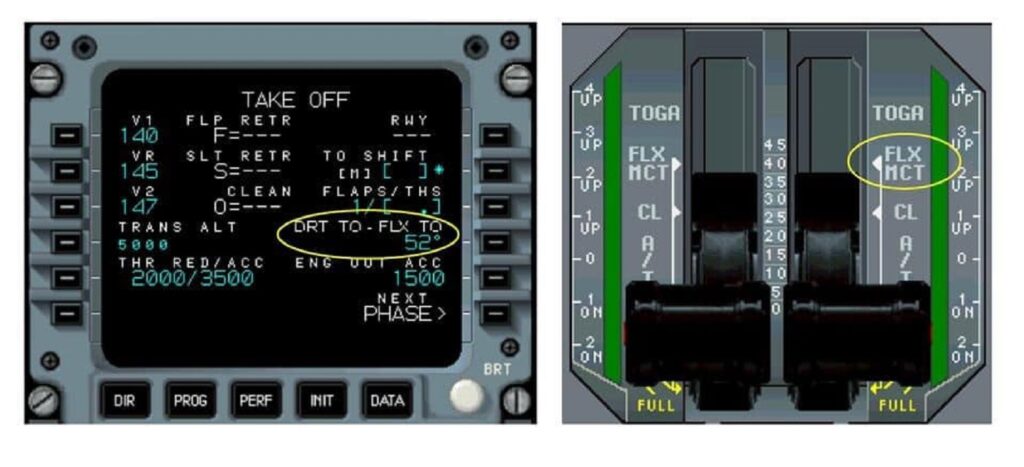
The aircraft actual takeoff weight is often lower than the maximum regulatory takeoff weight. Therefore, in certain cases, it is possible to takeoff at a thrust less than the Maximum Takeoff Thrust. It is advantageous to adjust the thrust to the actual weight, as it increases engine life and reliability, while reducing maintenance and operating costs.
These takeoff operations generally fall into two categories: Those using the reduced thrust concept, known as flexible takeoffs in the Airbus world, and those using a specific derated thrust level named derated takeoffs.
The derated takeoff enables to improve the takeoff performance if the TOW is limited by VMCG.
VMCG limitation usually occurs on short and/or contaminated runways. The principle is to impose a lower engine rating to benefit from lower minimum control speeds.
Selection of TOGA thrust is not permitted when a derated takeoff is performed, except when requested in any abnormal or emergency procedures.
The use of reduced thrust takeoff (FLEX takeoff) is not permitted in association with derated takeoff.
The use of derated takeoff is permitted regardless of the runway condition (dry, wet, or contaminated).
A320Neo (Leap-1A) has optional six levels of Derated TakeOff (DTO) thrust from -4% to -24% to complement the Maximum TakeOff (MTO)
During cockpit preparation (FMGS DATA INSERTION), the flight crew must insert the derated takeoff level chosen on the PERF TO page of the MCDU.
To do so, the flight crew must enter D followed by the level of derated thrust in the DERATED TO – FLEX TO TEMP field. (i.e.: To select a 24% derated thrust level, the flight crew enters D24 in the DERATED TO – FLEX TO TEMP field).
The derated takeoff function is activated when the thrust levers are set in the FLX/MCT detent. It is deactivated when the thrust levers are moved out of the FLX/MCT detent.
Author – Zinhom Mohmoud ( Aviation Training Consultant)





